Latin name: anthurium
Origin: South and Central America
Flamingo flower anthurium
Anthurium (lat. Anthurium) is a herbaceous evergreen plant, the Latin name of which was formed from the ancient Greek words for "flower" and "tail". Its genus includes up to 900 species. There are plants of a wide variety of forms from climbing to tree-like, most often these are epiphytes that grow on trees.
Anthurium stems are thick, shortened, elongated are less common. The leaves, located at the ends of the stems, are of a wide variety of shapes: rounded, spatulate or with blunt tops. They are assembled into a socket, and there are vertical ones. The structure of the leaflet can be leathery or brittle, and its surface is matte, glossy or semi-gloss.
Anthurium can be compared with a sunflower, because it also has the ability (in a humid climate) to turn its leaves after the sun.
In a dry environment, the leaves form a rosette - to accumulate plant residues, which will allow you to accumulate water.
Anthurium blooms originally. During the female phase, only the stigma is visible from the flower, the stamens are hidden - the view of the flower is female. At this time, droplets of a viscous sweet liquid appear on the stigmas, which attracts pollinators. After the liquid dries up, then the stamens appear.
The aroma of different types of anthuriums is different, from barely audible to very strong, tasty or stinking. Smells are even different in chemical composition. The fruits of the plant are juicy berries that contain from 1 to many seeds. Berries are monophonic, striped or bicolor from bright red to black.
Popular types of anthurium
Anthurium Andre (Anthurium andreanum)
A large plant with heart-shaped large dark green leaves and glossy red flowers in the middle with a white cob. The bedspread is leathery, its color can be pink, white, yellow, orange.
Anthurium Scherzer (Anthurium scherzerianum)
Differs in low height, shortened stems, up to 40 cm. The leaves are lanceolate, dark green. Inflorescences are orange, usually rising above the plant. The spathe of this species is dense, bright red (there are other colors).
Crystal Anthurium (Anthurium Crystallinum)
An epiphytic or terrestrial plant with a very short trunk, sometimes subterranean. Height up to 1 meter. The leaves tend to change their color from bronze to dark green. Hanging leaves broadly heart-shaped. Loves moisture and spraying. The flowers emit an odor reminiscent of carnations.
Anthurium magnificum (Anthurium magnificum)
This is a deciduous-decorative low plant, similar to the previous type of anthurium. It has large leaves with a velvety sheen, dark green and white veins.
Anthurium home care
With all its appearance, this beautiful flower, as it were, speaks of its whimsicality. You ask: "How to care for anthurium, is it whimsical?". In the case of anthurium, appearance is not deceiving - it is so capricious that most of its species are best admired in greenhouses.
Be careful, the leaves and stems are poisonous due to the content of calcium oxide crystals, once in the mouth they will certainly cause a burn.
Keep the plant away from animals and use gloves when handling it to avoid skin irritation.
Location selection
Anthurium is thermophilic, loves high humidity. Do not allow the temperature to drop below 16°C or the leaves will die. Spray it in the summer (without getting on the flowers) 1 time per day. Bright light - the leaves will curl up, little light - they will not bloom. Direct sunlight is unacceptable; east, north or west windows are ideal.
Watering
Regular watering is required - every 3 days in summer, in winter - 1 time in 7 days. The flower is picky about systematic watering. It will not tolerate overdrying, nor too wet soil. It is better to drain excess water from the pan after a while.
You can not water the anthurium with cold and lime water, otherwise the leaves may turn yellow. Pour soft water, for this you can add 3 drops of lemon juice per 1 liter of water. But it will not be possible to completely get rid of stiffness in this way, the best way is to freeze the water in the freezer. The water is not completely frozen, then the unfrozen residue containing all unnecessary salts is drained.
The main thing when watering a plant is to find a middle ground, just as insufficient and excessive watering is very harmful to anthurium. We can say that overflow is more dangerous, because it can cause root rot and, as a result, the plant will die.
Priming
It grows well in this mixture: peat (3 parts), chopped sphagnum moss (1 part), gravel (1 part) and organic soil quite a bit.
Good drainage is required.
Top dressing
Fertilize with liquid fertilizer or organic during flowering and growth 2 times in 4 weeks.
Anthurium transplant
Since the anthurium does not grow very fast, it does not need to be repotted frequently. In the spring, young plants are transplanted annually into a larger pot, while adults - every 3 years. The dishes need shallow, otherwise the plant may simply not bloom until its roots fill the entire pot. Good drainage is required. The plant will benefit from replacing the top 2 cm of soil once a year.
If it is unstable when planting the anthurium, then tie it to a support, but you do not need to bury it deep. When the trunk is exposed, the plant is planted deeper, and the exposed part is covered with sphagnum, then the anthurium can develop adventitious roots.
Anthurium breeding
Provide proper care for the plant, and it will delight you not only with beautiful flowers, but also with multiple side shoots with roots. In addition to side shoots, anthurium can be propagated by plant pision, stem and apical cuttings and seeds.
The easiest way to propagate is by piding the stem in the spring. When transplanting, the shoot is simply separated from the mother plant. This procedure can even be done without removing the flower from the pot, but there is a prerequisite - the soil must be dry. If the shoot has a root, then after sprinkling the cut with charcoal and drying it for an hour in the shade, the shoot is planted in the soil. The first days do not water the shoot, but simply moisten the air around it. The shoot can be rooted without roots, you just need to place it in wet sphagnum. Very often, these seedlings bloom in the same year.
If an adult anthurium is strongly extended and has formed a bare trunk, then cut off the top with 2-3 leaves and use it as a cutting.
Anthurium is rarely propagated by seeds. With this method, remember that the varietal trait of the plant may not be preserved. The appearance of seeds is taken care of in advance: for this, pollen is transferred from one flower to another (pollinated), while you can use a cotton swab or a soft brush. This action should be repeated for several days. Be patient, as bright berries can appear as early as a year after pollination.
Anthurium diseases and pests
Without touching the particulars, the plant is not considered painful, the difficulties are mainly associated with improper care. May be damaged by: mealybug, its manifestation looks like a white cottony coating on the leaves; spider mite, its manifestation looks like a dusty coating, and soon as yellow specks on the leaves; shield - brown scales on the cuttings.
Problems that may arise
- The most popular question is: "Why does the anthurium not bloom?". Most likely, he simply does not have enough light. Put it not in the shade, he loves diffused light, but make sure that direct sunlight does not fall on the anthurium. Or maybe you transplanted the anthurium immediately into a large pot. The dishes need shallow, otherwise the plant may simply not bloom until its roots occupy the entire pot.
- Another frequently asked question: “Why do anthurium leaves dry?” The leaves dry in dry air, and may fade when the soil is waterlogged. The tips of the leaves may turn yellow from cold or standing in a draft. Also, the cause of the yellowness of the leaves may be a lack of light, or vice versa, the anthurium got burned from direct sunlight.
- Another difficulty is the blackening of the tips of the leaves. This happens with excess calcium salts in the soil or excess water hardness.




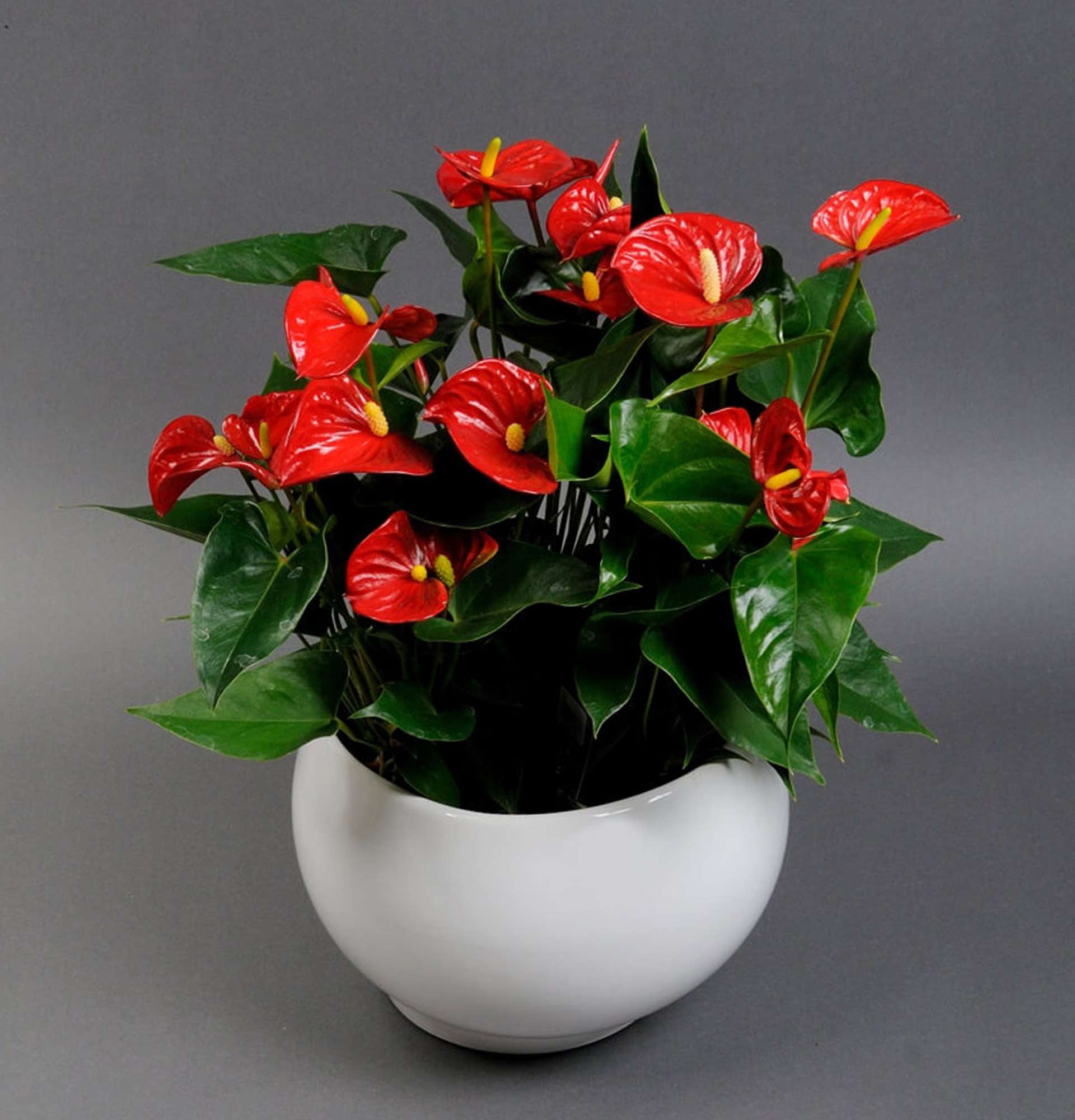










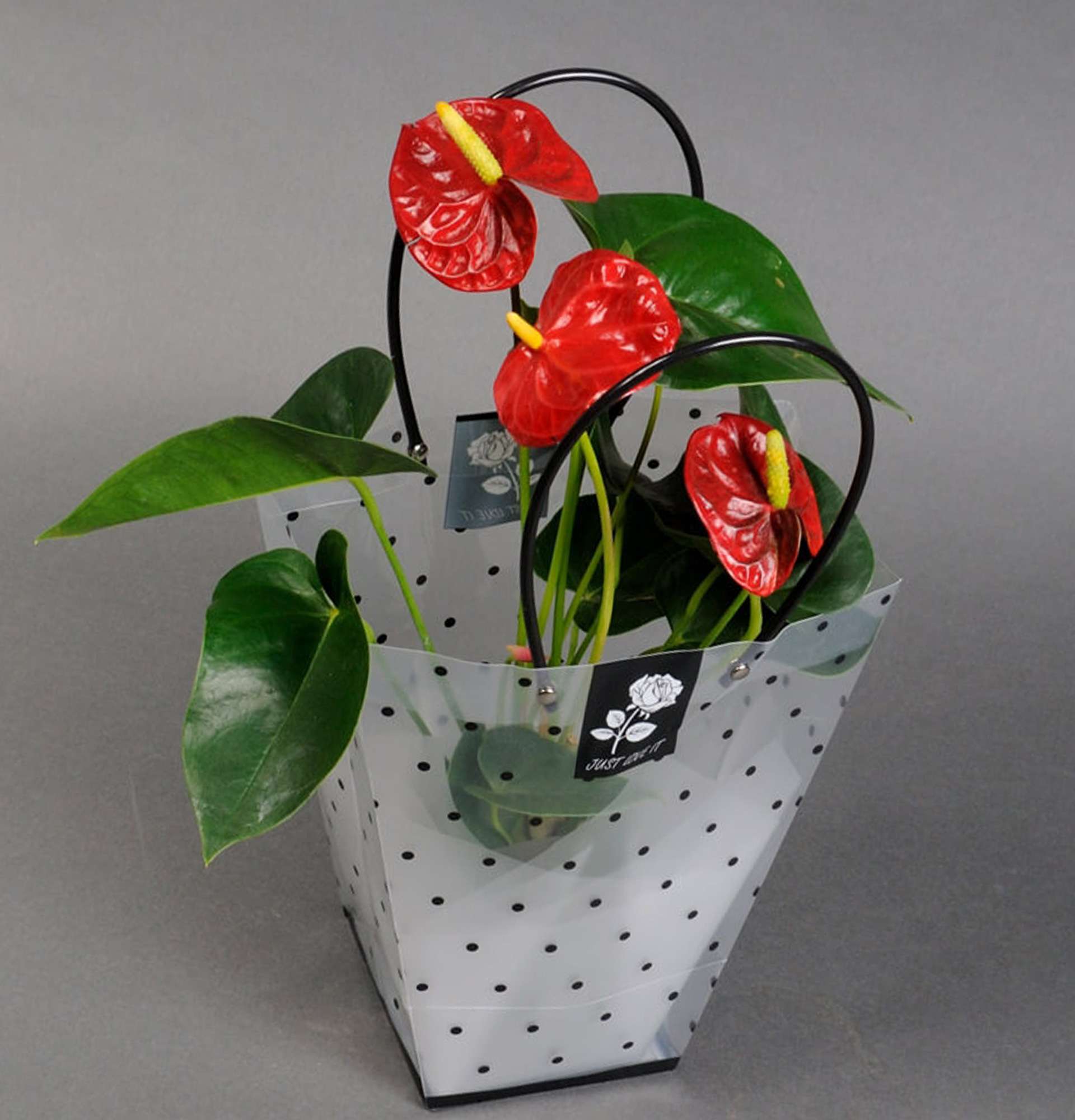
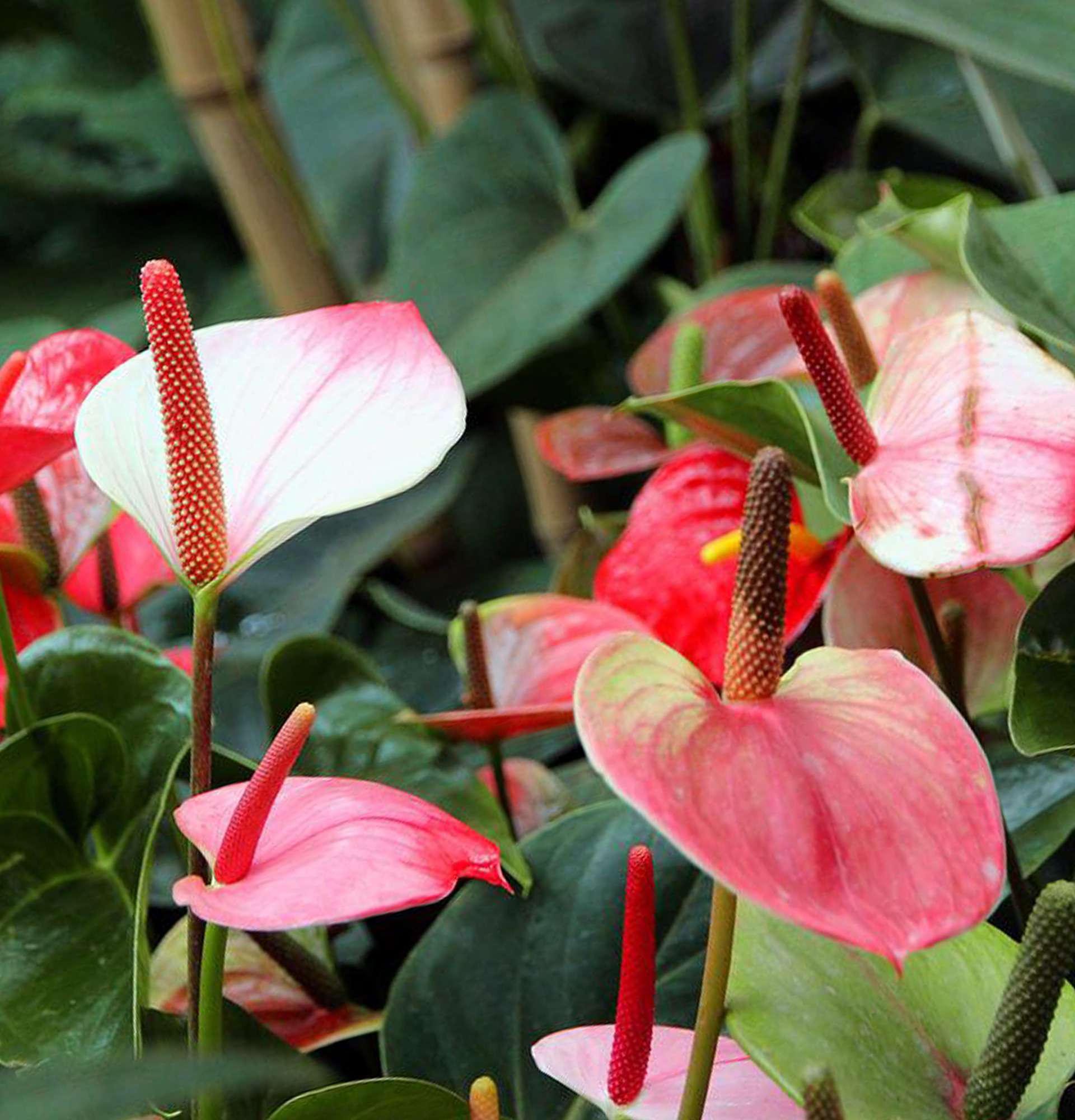

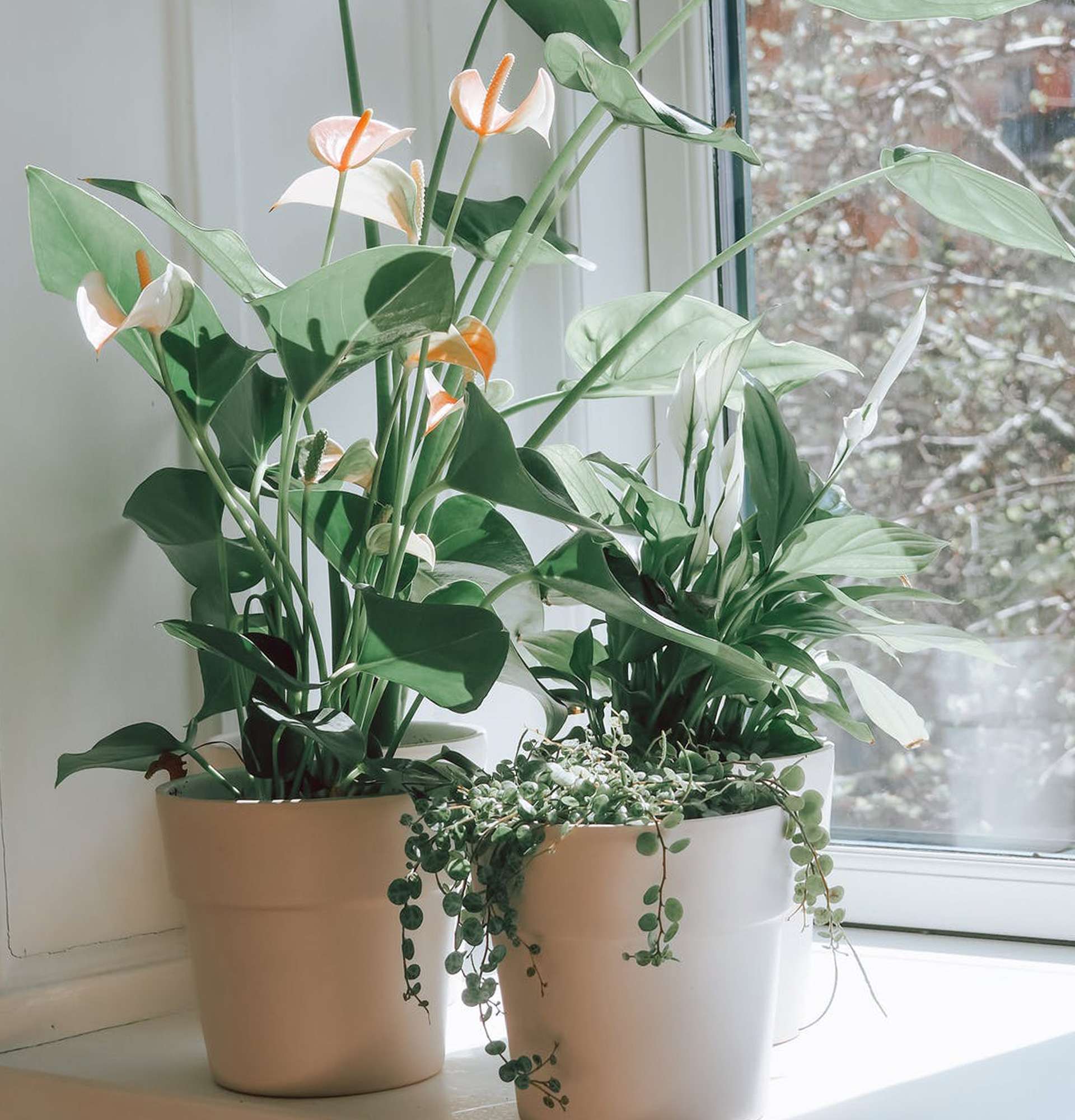
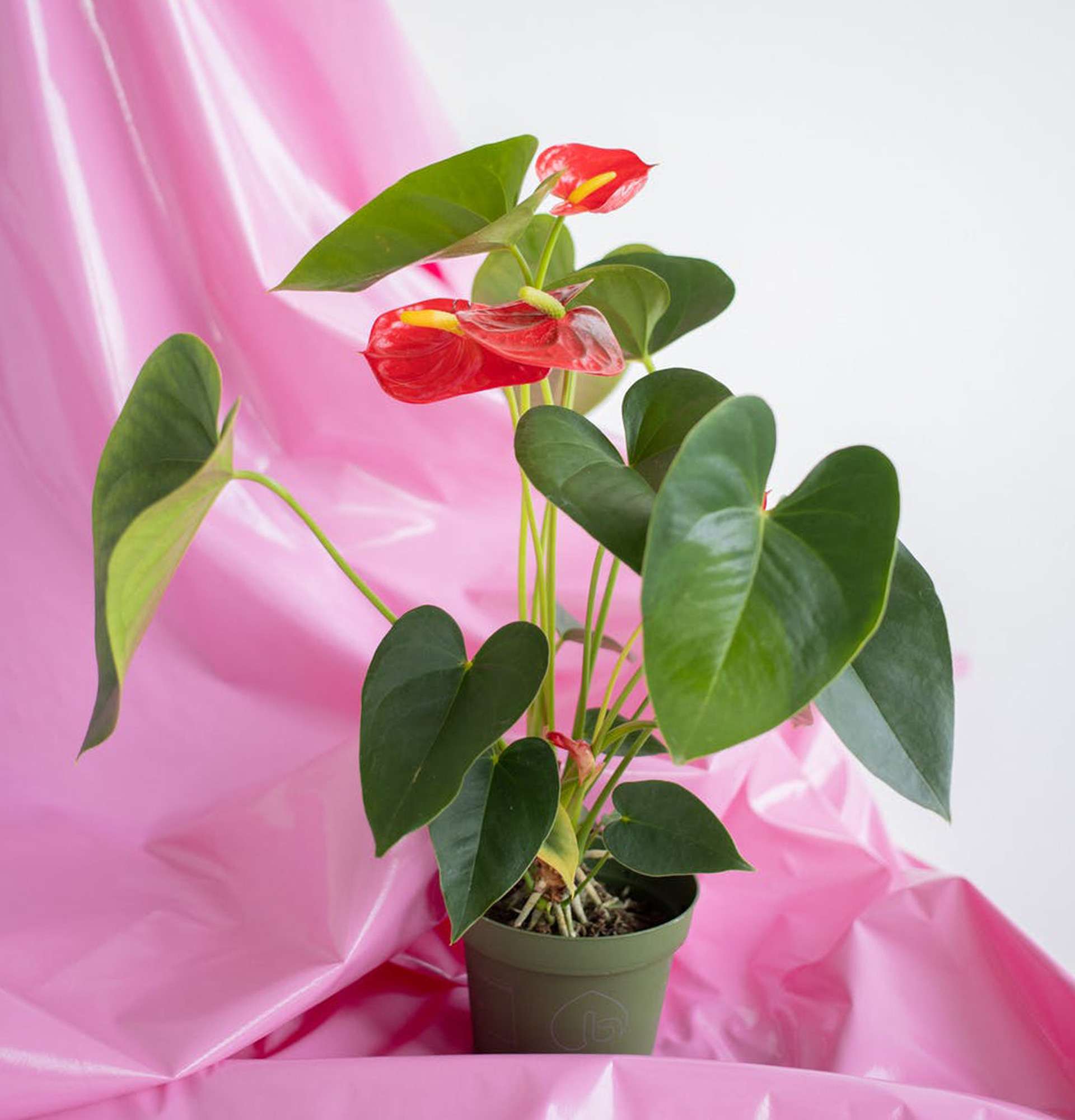
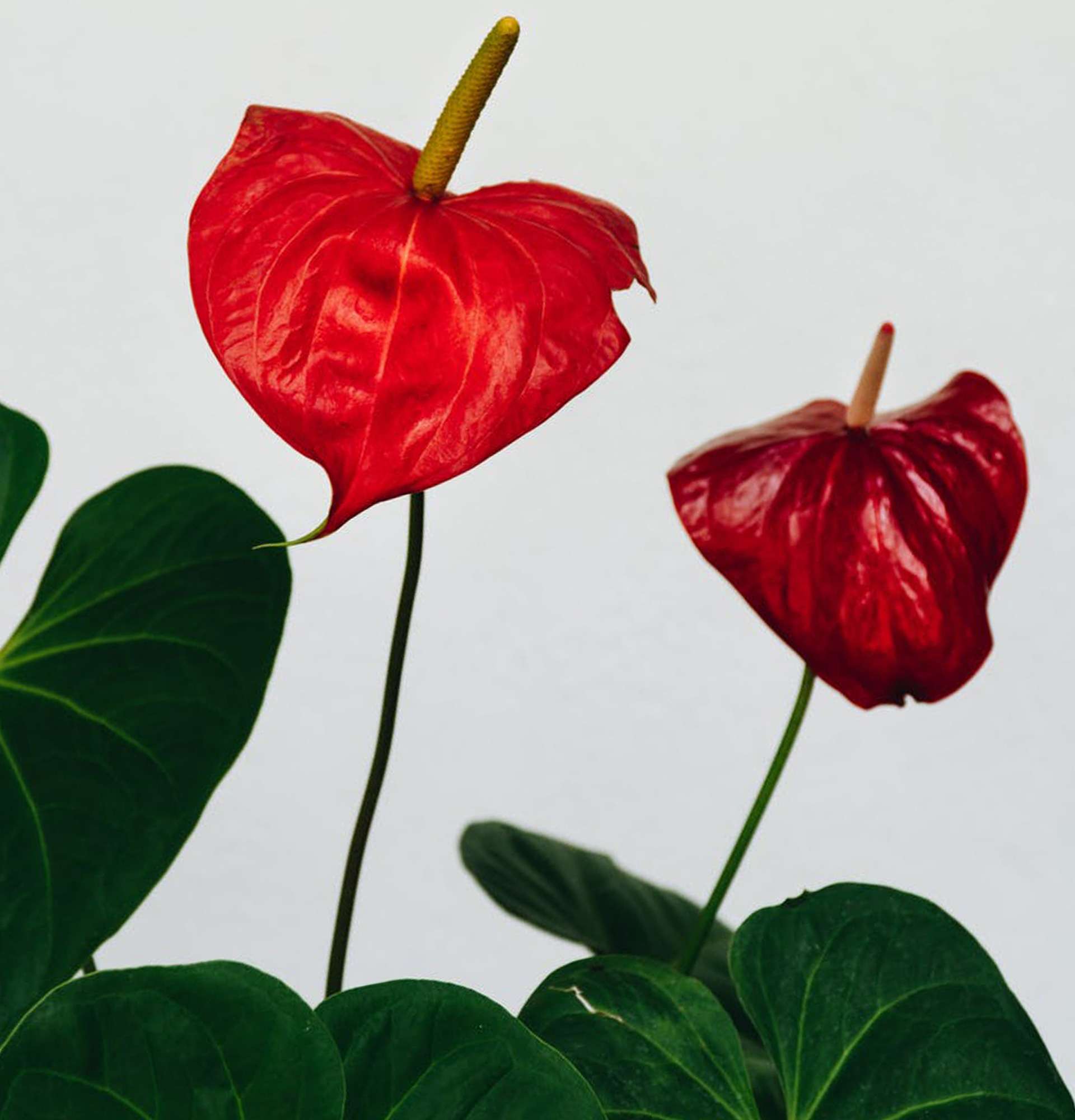
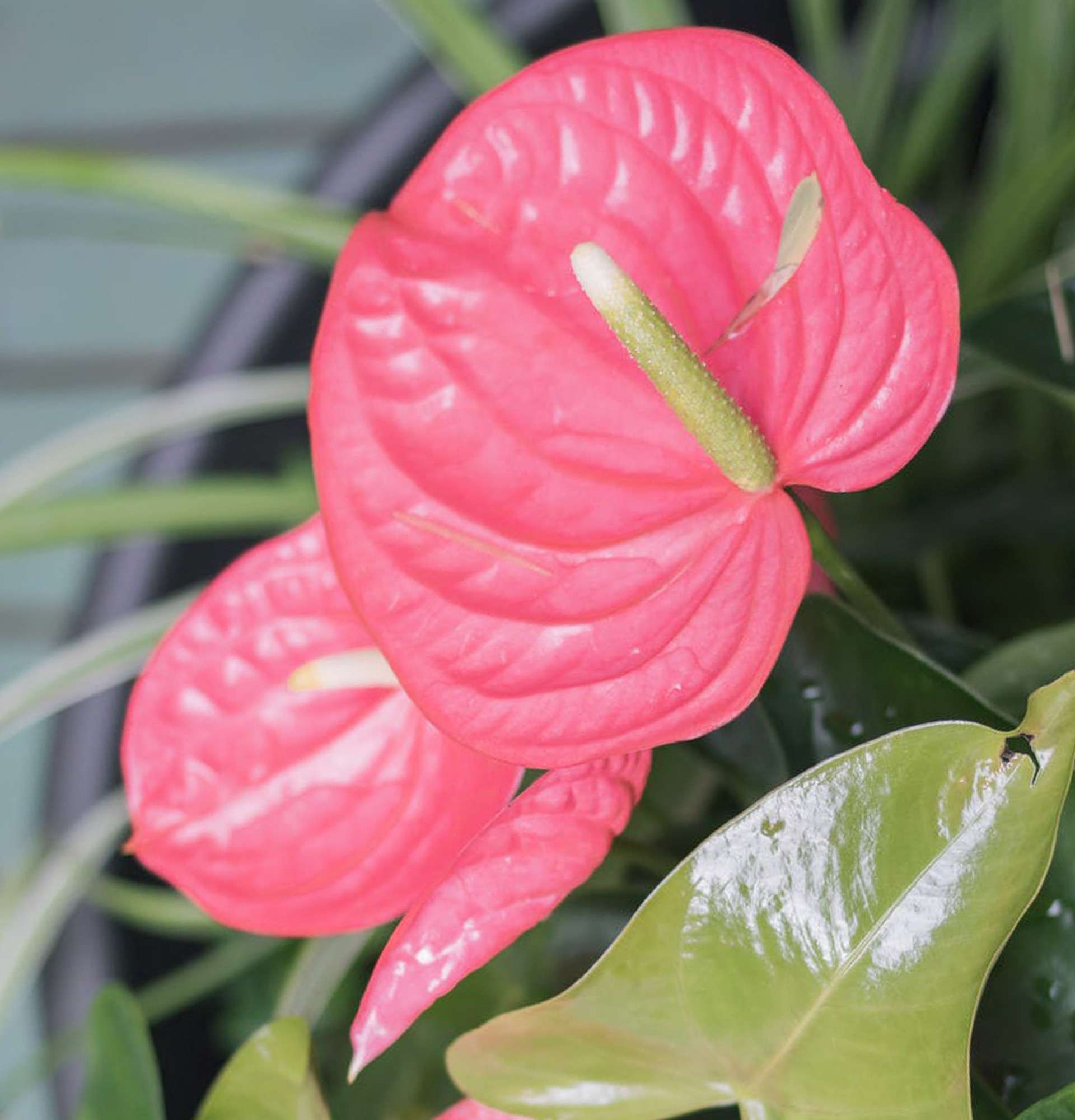
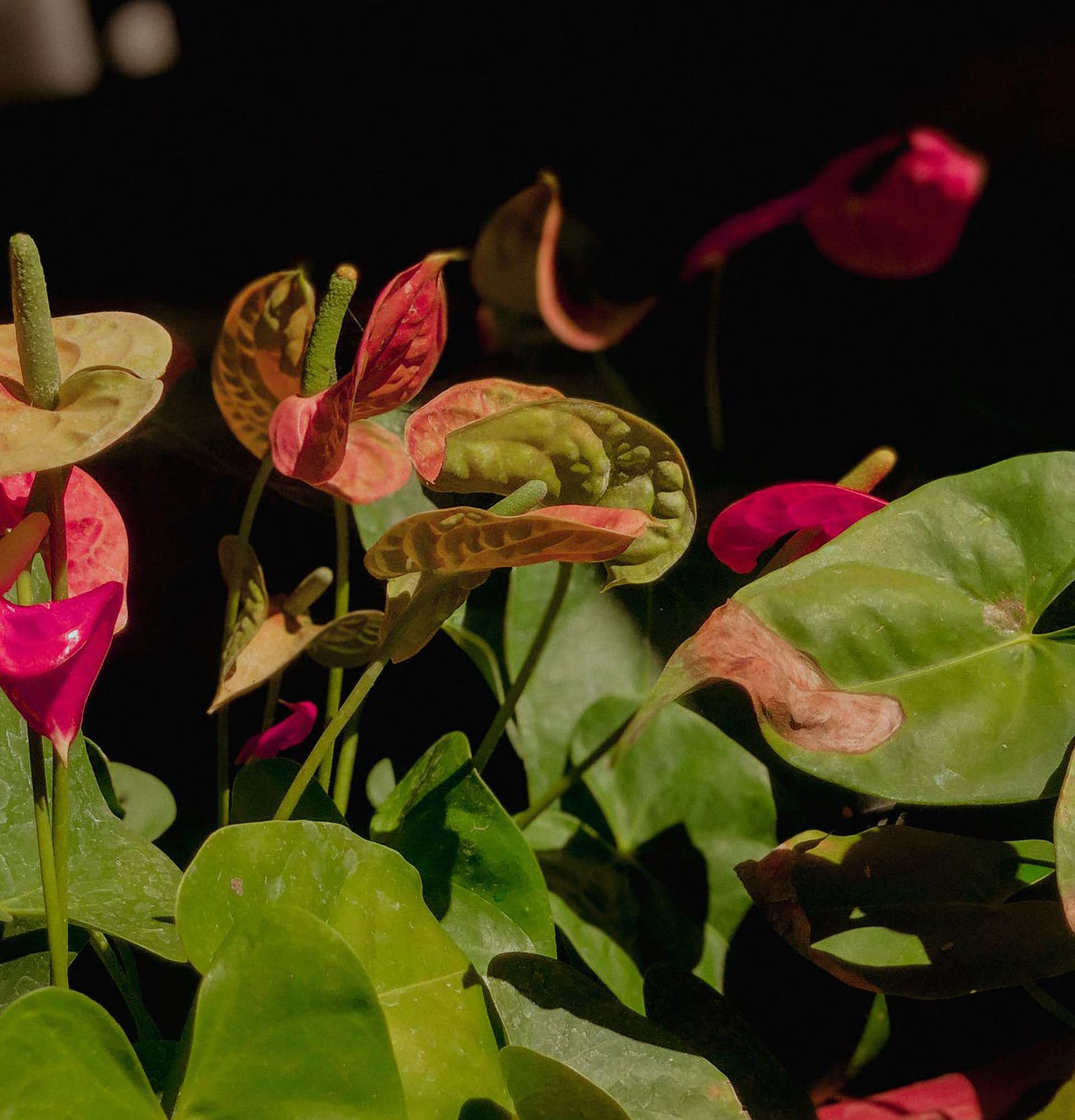

Write comments
Comments
Юлия
Посетитель
Аэлита